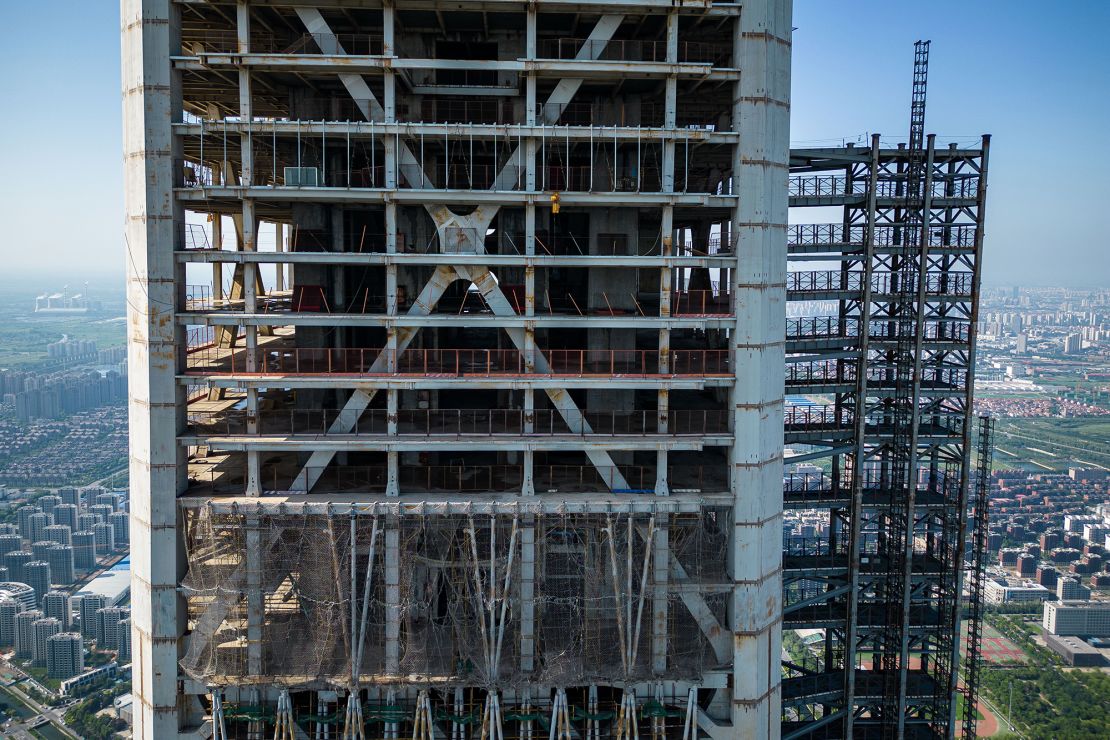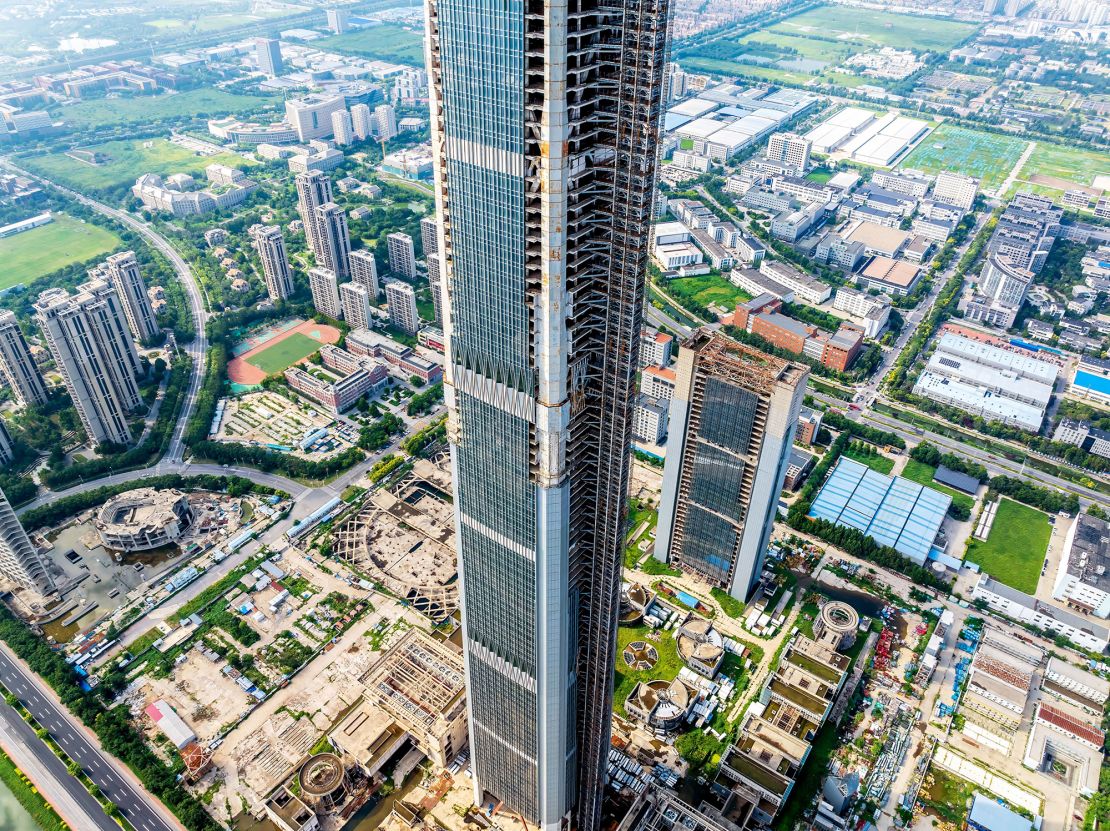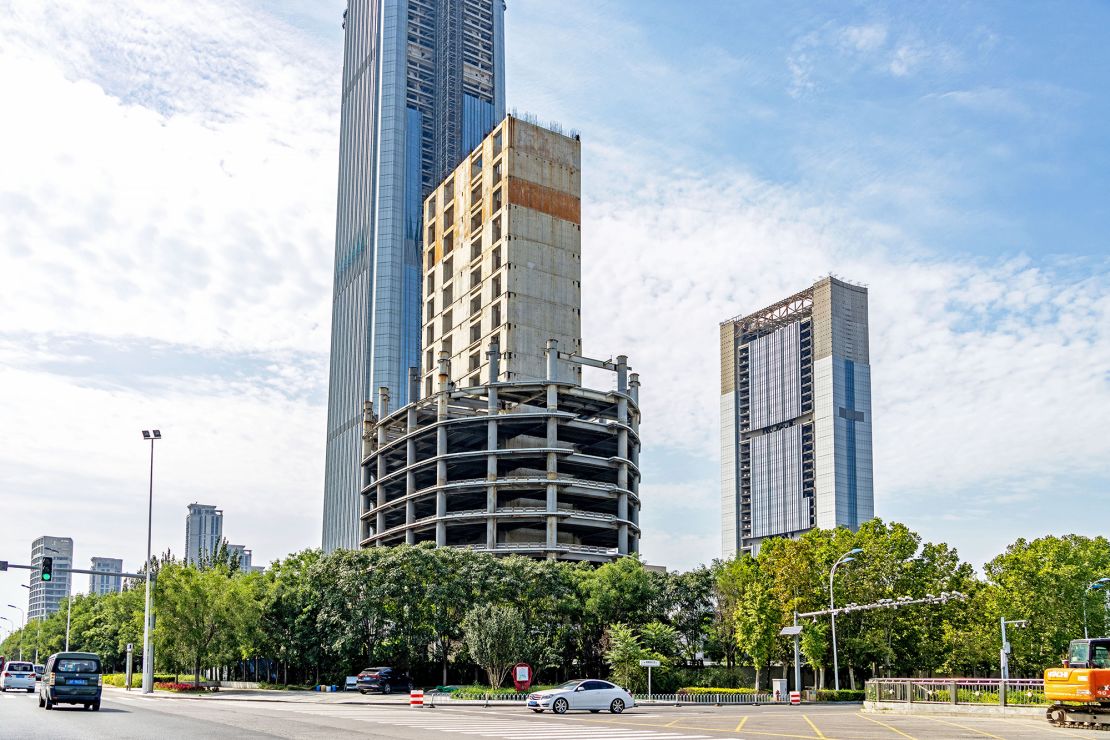Construction on the world’s tallest unoccupied skyscraper could resume as early as next week, nearly a decade after work came to a standstill, according to Chinese state media.
The 597-meter (1,959-foot) Goldin Finance 117 in Tianjin, a northern port city in China, was topped out but left incomplete in 2015 due to significant financial setbacks. Now, it’s expected to be completed by 2027.
Standing at 117 stories, the tower was poised to become China’s tallest skyscraper when construction began in 2008. Designed with “mega columns” to withstand powerful winds and earthquakes, the striking “walking stick” structure featured a diamond-shaped atrium at the top, housing a swimming pool and an observation deck. According to architecture firm P&T Group, the upper floors were intended to host office spaces and a five-star hotel.
However, the project came to a halt after the 2015 Chinese stock market crash, which cast serious doubt over the future of its developer, Hong Kong-based Goldin Properties Holdings. The company, founded by Pan Sutong—once one of Hong Kong’s wealthiest businessmen—has since entered liquidation.

On Monday, China’s Greenland Group announced that construction is resuming on the previously stalled Chengdu Greenland Tower in the southwestern city of Chengdu, according to local state-owned media. The 468-meter (1,535-foot) skyscraper has been on hold since 2023 due to financial difficulties faced by the state-owned developer, as reported by Reuters.
The simultaneous resumption of two high-profile projects is likely not a coincidence, said Qiao Shitong, a law professor at Duke University School of Law and author of two books on Chinese real estate.
“The national government has made it clear that it wants to stabilize the real estate market,” Qiao said during a video call. He added that the government has been encouraging local authorities to help “revive” the struggling sector, signaling to the market that it’s not just about the skyscrapers themselves.

“(Supertall skyscrapers) are not necessarily the most efficient projects and they are not necessarily making profits, but they are indicators,” he said. “By having this project revived and completed, the government at least hopes it can increase people’s confidence.”
For local officials, completing abandoned skyscrapers is also about “the image of the city,” said Fei Chen, a reader in architecture and urban design at the UK’s University of Liverpool. “They don’t want a project to be unfinished and to stay like that, which is an eyesore for everyone.”
Chen stressed, however, that the resumption of projects in Tianjin and Chengdu is unlikely to herald a return to the “vanity projects” of recent years.
“The government is conscious that although these (skyscraper) projects have some positive effects on the area, they require too much investment and are not financially or environmentally sustainable… I think the general urban development trend is not changed by the fact that some projects are being resumed. I think it’s more about local government efforts to make their city better.”

However, with sluggish property sales and low office occupancy rates across China, the economic feasibility of the project remains uncertain, according to Qiao. “It’s a huge investment,” he said. “And I honestly don’t know who will buy or rent this commercial space.”
During the decade-long pause, Tianjin saw the completion of another supertall skyscraper — the Tianjin CTF Finance Centre, standing at 530 meters (1,739 feet), currently the world’s eighth tallest building. Meanwhile, Goldin Finance 117 has been overtaken in height by both the twisting Shanghai Tower and the Ping An Finance Centre in Shenzhen, meaning it would now rank as China’s third tallest building (and the world’s sixth tallest) once completed.
If Saudi Arabia’s kilometer-high Jeddah Tower and Dubai’s Burj Azizi, both of which are also set for completion later this decade, are finished, Goldin Finance 117 will fall to eighth globally.



